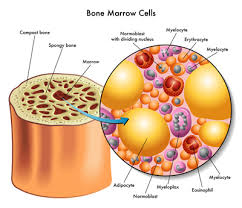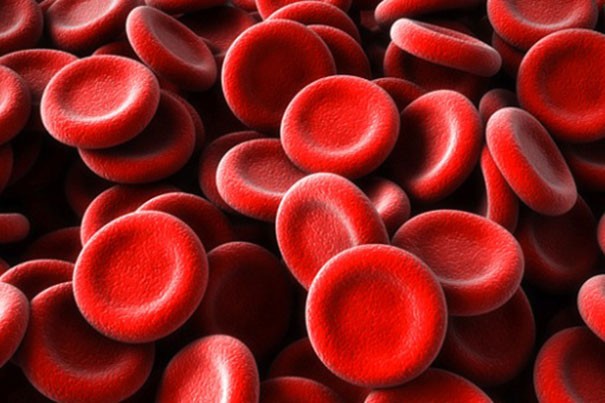When you read your diagnostic testing report (CBC) and learn that your white blood cells are below normal you might not think much about it. But after several remissions and relapses a bout of pneumonia could be a real problem for you.

Myelosuppression is both a MM symptom and side effect. The health of our bone marrow, our red, white blood cells and platelets, is fundamental to our health. Multiple myeloma (MM) is a blood cancer that causes a type of plasma cell to replicate beyond control. This replication of monoclonal proteins (the MM cell) causes problems to our bodies.
We humans can tamper with out blood health (myelosuppression) a bit by taking chemotherapy regimens that can reduce our red, white blood cells but in my experience, conventional oncology takes this tampering way too far. Meaning, toxic chemotherapy and radiation cause permanent
- anemia,
- thrombocytopenia,
- leukopenia,
- fatigue,
- infection,
- bleeding, etc.
to MM patients and survivors. Because myelosuppression is the leading cause of death among MM survivors, I have to wonder if common side effects of MM therapy are confused with common symptoms or MM which then cause common COD to MM survivors.
I think a contributing factor, a problem that contributes to conventional oncology not understanding the long-term damage done by toxic therapies is the fact that different drug companies track side effects differently.
Multiple Myeloma Symptoms Cloud Multiple Myeloma Side Effects-
This blog post “What is MM? Oncology has it backwards…” represents a light bulb going off over my head. When I read a study documenting that MM symptoms, side effects and causes of death all overlapped, I almost fell off my chair. Oncology has it backwards… the cure is worse than the disease…
Myelosuppression- low blood cells, reduced immune function, both as symptom of MM as well as a side effect of therapy, is clear. Conventional oncology has one FDA approved therapy- antibiotics.
Side Effects caused by myelosuppression:
Therapies to prevent or heal side effects caused by myelosuppression:
Unfortunately myelosuppression is only one of many possible short, long-term and late stage side effects.
David Emerson
- MM Survivor
- MM Cancer Coach
- Director Galen Foundation
Recommended Reading:
“Antioxidants evaluated were: glutathione (11), melatonin (7), vitamin A (1), an antioxidant mixture (2), N‐acetylcysteine (2), vitamin E (5), selenium (2), L‐carnitine (1), Co‐Q10 (1) and ellagic acid
The majority (24) of the 33 studies included reported evidence of decreased toxicities from the concurrent use of antioxidants with chemotherapy…
Implications for clinical practice
This systematic review provides preliminary evidence, limited by quality and sample size of the reviewed studies, suggesting that certain antioxidant supplements may reduce adverse reactions including neurotoxicity, asthenia, stomatitis/mucositis, and weight loss.
Significant reductions in toxicity may alleviate dose‐limiting toxicities so that more patients are able to successfully complete prescribed chemotherapy regimens, suggesting an improved therapeutic index…
In this systematic review, 5 included studies reported the antioxidant group (3 GSH, MLT and a mixture) experienced better treatment tolerance in terms of either less dose‐reduction34, 39, 41, 54 or higher rates of completing full chemotherapy regimens than control groups (GSH).31
None of the included studies reported that the control group had higher doses or more full cycles of chemotherapy than the antioxidant group.
Because of the potential for the relationship between the reduction of dose‐limiting toxicities allowing for full chemotherapy cycles and the subsequent potential for increased tumor response and/or survival, it is critical that future antioxidant/chemotherapy studies employ proper sample sizes and methodologies so that the results are of clear clinical relevance.
Our previous review found no evidence of antioxidant interference with chemotherapy mechanisms, with a possibility that antioxidants may even improve tumor response or patient survival.14
Combining this result with the potential for improvement of toxic side effects by antioxidants reported in the present review, additional strategies for further research on antioxidants and chemotherapy are now warranted..”
“Curcumin is a safe natural product with anticancer, anti-inflammatory and antioxidant activities. It has recently received increased attention in protecting normal tissues from chemotherapy-induced toxicity…
Curcumin can enhance therapeutic efficacy of many anticancer drugs and reduce their side effects through pharmacological and pharmacokinetic interactions.
Growing evidence show that curcumin can reduce chemotherapy-induced toxicity through clearing intracellular ROS in normal tissues and modulating a series of target molecules such as adhesion molecules, inflammatory factors, transcription and growth factors, apoptosis-related proteins, and some enzymes and kinases, etc. (Calabrese et al., 2003, 2008; Mohamad et al., 2009; Belcaro et al., 2014; Fetoni et al., 2014; Palipoch et al., 2014; Sheu et al., 2015; Sankrityayan and Majumdar, 2016; Banerjee et al., 2017; Ortega-Domínguez et al., 2017; Benzer et al., 2018; Dai et al., 2018).
However, the current evidence is mainly from the in vitro and in vivo animal experiments, few clinical trials have yet investigated the protective effect of curcumin against chemotherapy-induced toxicity (Mohajeri and Sahebkar, 2018)…”
“The results revealed obvious ginsenoside Rg3-induced improvement in the leukocyte, hemoglobin, platelet and neutrophil counts at toxic grades I–IV, and leukocyte counts at toxic grades III–IV. The sensitivity analysis revealed that the results were robust…
Overall, this study suggested that ginsenoside Rg3 is beneficial for alleviating the chemotherapy-induced decrease in leukocyte, hemoglobin, platelet, and neutrophil counts.
Conclusion- This meta-analysis and systematic review provided useful information for clinicians, indicating that ginsenoside Rg3 can alleviate the chemotherapy-induced reduction of the counts of leukocyte, hemoglobin, platelet, and neutrophil…”




